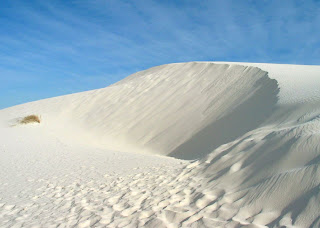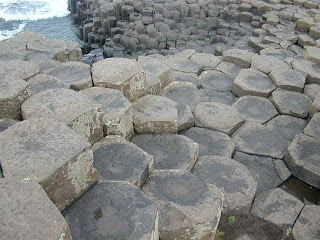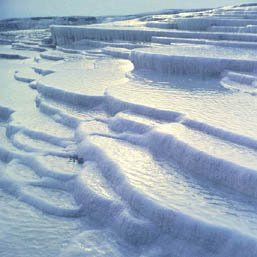 White Sands National Monument includes the most scenic part of the world's largest gypsum dune field and is located in southern New Mexico. The sand, as white as snow, is composed of fine crystals of gypsum, the same mineral from which plaster of paris is made. The source of the sand is the San Andres Mountains to the west of the basin and the Sacramento Mountains to the east. Both mountain ranges contain massive deposits of gypsum that was formed as an ancient sea evaporated some 100 million years ago. In a process that has gone on for countless centuries, seasonal rains and melting snow carry dissolved gypsum from the mountains down to lake Lucero in the lowest part of the basin.
White Sands National Monument includes the most scenic part of the world's largest gypsum dune field and is located in southern New Mexico. The sand, as white as snow, is composed of fine crystals of gypsum, the same mineral from which plaster of paris is made. The source of the sand is the San Andres Mountains to the west of the basin and the Sacramento Mountains to the east. Both mountain ranges contain massive deposits of gypsum that was formed as an ancient sea evaporated some 100 million years ago. In a process that has gone on for countless centuries, seasonal rains and melting snow carry dissolved gypsum from the mountains down to lake Lucero in the lowest part of the basin.In this harsh desert environment, the water soon evaporates and leaves a glittering crust of gypsum crystals on the lake bed. Weathering and erosion eventually breaks the crystals into sand-size grains that are carried away by the prevailing winds from the southwest, forming white dunes. The dunes constantly change shape and slowly move downwind, covering the plants in their path. Constantly on the move, the dunes advance upto 33 feet per year.
The gypsum does not readily convert the sun's energy into heat and thus can be walked upon safely with bare feet, even in the hottest summer months. Here and there, however, drought-resistant plants such as salt bush and yucca manage to survive. Here too are found highly specialized pocket mice, lizards, and other creatures whose white coloration makes them nearly invisble on the gleaming gypsum sand.





